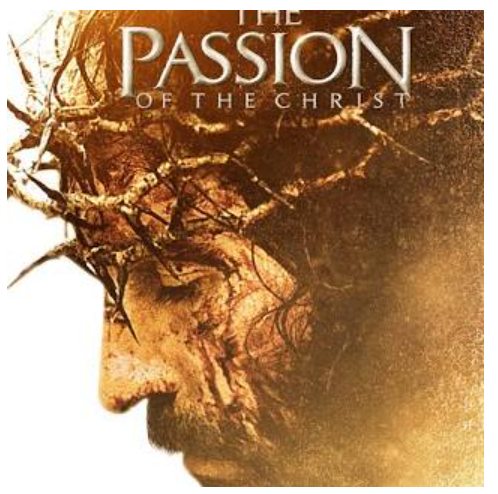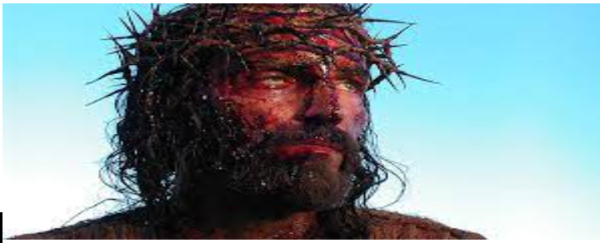 Cinema’s interpretation of religion has been a key subject in film history for many decades. Many films have portrayed accurate depictions and portrayals of religious figures and events. However, if there is one religious film that has garnered controversy and impacted film history unlike any other. It’s the biblical drama, The Passion of the Christ, released in 2004. It was directed by acclaimed actor and filmmaker Mel Gibson and stars Jim Caviezel. The film documents the last 12 hours of the life of Jesus Christ. Upon its release, it divided and shocked many viewers, not just Catholics and Christians, due to its bloody scenes, and shocking twists and turns. Despite it being acclaimed for its performances, direction, and cinematography, it was viewed as too violent and possibly, antisemitic. Despite its controversy, it received three Academy Award nominations and remains the highest-grossing Christian, indie, and R-rated movie of all time. Catholic Easter has finally arrived on the film’s 20th anniversary, it’s time to reflect on the background, production issues, controversy, and impact of the film 20 years later, as an upcoming sequel based on Christ’s resurrection has been announced for release on (Good Friday), on April 18, 2025.
Cinema’s interpretation of religion has been a key subject in film history for many decades. Many films have portrayed accurate depictions and portrayals of religious figures and events. However, if there is one religious film that has garnered controversy and impacted film history unlike any other. It’s the biblical drama, The Passion of the Christ, released in 2004. It was directed by acclaimed actor and filmmaker Mel Gibson and stars Jim Caviezel. The film documents the last 12 hours of the life of Jesus Christ. Upon its release, it divided and shocked many viewers, not just Catholics and Christians, due to its bloody scenes, and shocking twists and turns. Despite it being acclaimed for its performances, direction, and cinematography, it was viewed as too violent and possibly, antisemitic. Despite its controversy, it received three Academy Award nominations and remains the highest-grossing Christian, indie, and R-rated movie of all time. Catholic Easter has finally arrived on the film’s 20th anniversary, it’s time to reflect on the background, production issues, controversy, and impact of the film 20 years later, as an upcoming sequel based on Christ’s resurrection has been announced for release on (Good Friday), on April 18, 2025.
A simple overview of the film: it plays out as the usual story that Catholics and Christians are familiar with by now. Jesus is betrayed by one of his disciples, Judas, is arrested by Roman authorities in the Garden of Olives, is beaten and brutally assaulted in many different ways, is sentenced to death, whipped, forced to drag his cross to the mountain of Golgotha, and is crucified. After being left there for several hours, he finally dies after asking God to forgive his killers. However, after God apparently destroys a sacred temple and causes an earthquake, he causes the people of Jerusalem to realize he truly was the son of God, is buried in a tomb, and is resurrected three days later. The original film ends with a resurrected Jesus walking out of the tomb, setting up the upcoming sequel, The Resurrection of the Christ, which is set to be released near Easter 2025.
However, there are different aspects to the film’s plot that make it more controversial than the original story. As Jesus prays in the Garden of Olives late at night, he is confronted by a bald-headed woman-like figure, who is revealed by Satan (portrayed by Italian actress Rosalinda Celentano), who represents evil in the world. This deeply threw audiences off and even terrified them. Later, as Jesus is whipped following his sentencing, the audience sees Satan again, holding an incredibly ugly man-looking baby in the background. It was meant to represent Jesus’s existence, as well as his family. Throughout most of the film, Jesus is beaten, bloodied, and forced to wear a crown of thorns, which only gets worse as he is whipped. He suffers as he is pushed and falls down numerous times while carrying the cross. Finally, he is crucified, and left to die on the cross, where he prays to God to forgive the people who killed him, and his suffering finally ends. After this, a final scene shows Satan, defeated by Christ’s sacrifice, screaming from the underworlds of Hell, which is arguably the film’s most controversial scene.
Another controversial aspect of The Passion of the Christ is the effect it had on real life. The person who suffered the most was none other than the film’s star Jim Caviezel. There were a number of real-life bizarre things that happened to him while filming on set. While getting struck by lightning is a pretty rare occurrence, it happened three times on the set of The Passion of the Christ. Jim Caviezel claimed he was “lit up like a Christmas tree,” and it happened on two other instances to other crew members. In addition, because you can’t actually beat your film’s star in real life, a whipping post was set behind Caviezel’s back during the scourging scene, but the actor doing the whipping was terrible at it, so he accidentally whipped Caviezel’s back twice. While carrying the cross, Caviezel dislocated his shoulder, and while filming the crucifixion scene, developed pneumonia, and a lung infection. That’s not where it ends. Every day, he had to wake up at 3 am in order to make time to apply the film’s makeup, which was also rough to do, giving him several headaches and migraines. Despite accepting after Mel Gibson offered him the role of Jesus, Gibson attempted to talk him out of it, as it would destroy his career in Hollywood. However, Caviezel took the part anyway, wanting to take Gibson’s opportunity to play Jesus, as a devout Catholic himself. In addition to the influence the film had on Caviezel, the actor who portrayed Judas, who was an atheist, asked for a conversion to Christianity. Several people who watched the film fainted, threw up, and walked out. One woman even suffered a fatal heart attack after watching the film.
Twenty years after its release, The Passion of the Christ remains a controversial film for its scenes, bizarre incidents, and impact on the people who were involved, and also due to the fact that both Christians and Jews believed the film portrayed them in an antisemitic manner. Both Jim Caviezel and Mel Gibson’s careers declined after the release of the film, but they both separately worked their way back, with Caviezel’s rising in his acting career via his TV starring role in Person of Interest (2011-2016), and playing the lead role in the recent thriller film Sound of Freedom (2023), while Gibson has achieved a comeback as a director thanks to films such as Apocalypto (2006), and Hacksaw Ridge (2016), and the latter earned him an Academy Award nomination for Best Director. With the two set to reunite for the sequel, audiences can hope the sequel won’t cause as much controversy.


